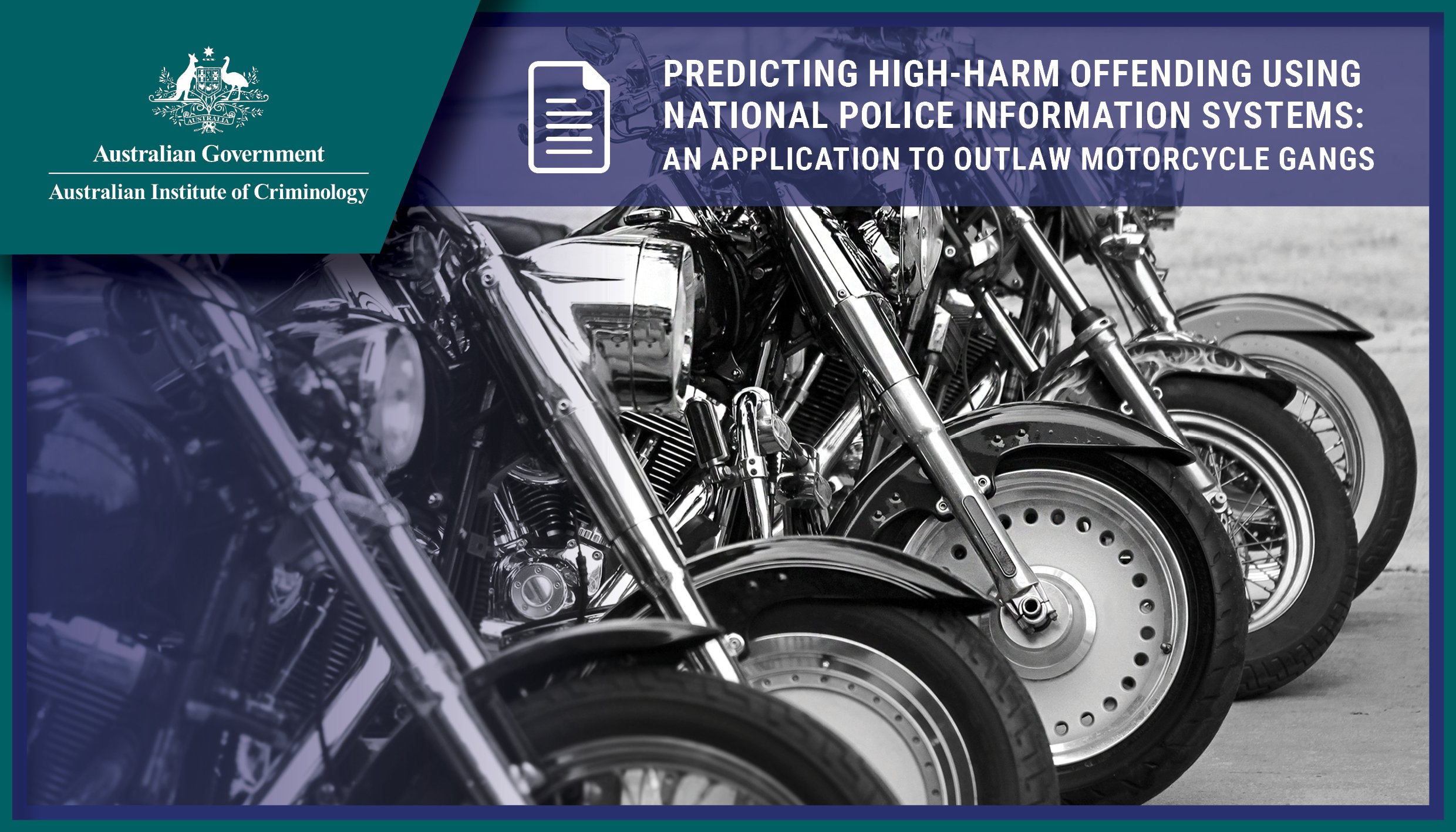Predicting high-harm offending using national police information systems: An application to outlaw motorcycle gangs
By Timothy Cubitt and Anthony Morgan
Risk assessment is a growing feature of law enforcement and an important strategy for identifying high-risk individuals, places and problems. Prediction models must be developed in a transparent way, using robust methods and the best available data. But attention must also be given to implementation. In practice, the data available to law enforcement from police information systems can be limited in their completeness, quality and accessibility. Prediction models need to be tested in as close to real-world settings as possible, including using less than optimal data, before they can be implemented and used. In this paper we replicate a prediction model that was developed in New South Wales to predict high-harm offending among outlaw motorcycle gangs nationally and in other states. We find that, even with a limited pool of data from a national police information system, high-harm offending can be predicted with a relatively high degree of accuracy. However, it was not possible to reproduce the same prediction accuracy achieved in the original model. Model accuracy varied between jurisdictions, as did the power of different predictive factors, highlighting the importance of considering context. There are trade-offs in real-world applications of prediction models and consideration needs to be given to what data can be readily accessed by law enforcement agencies to identify targets for prioritisation.
Canberra: Australian Institute of Criminology. 2024, 47pg


